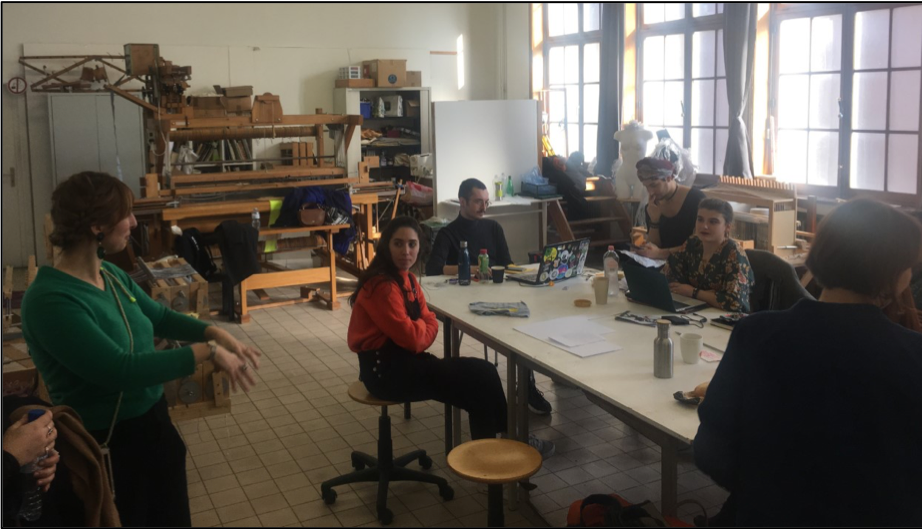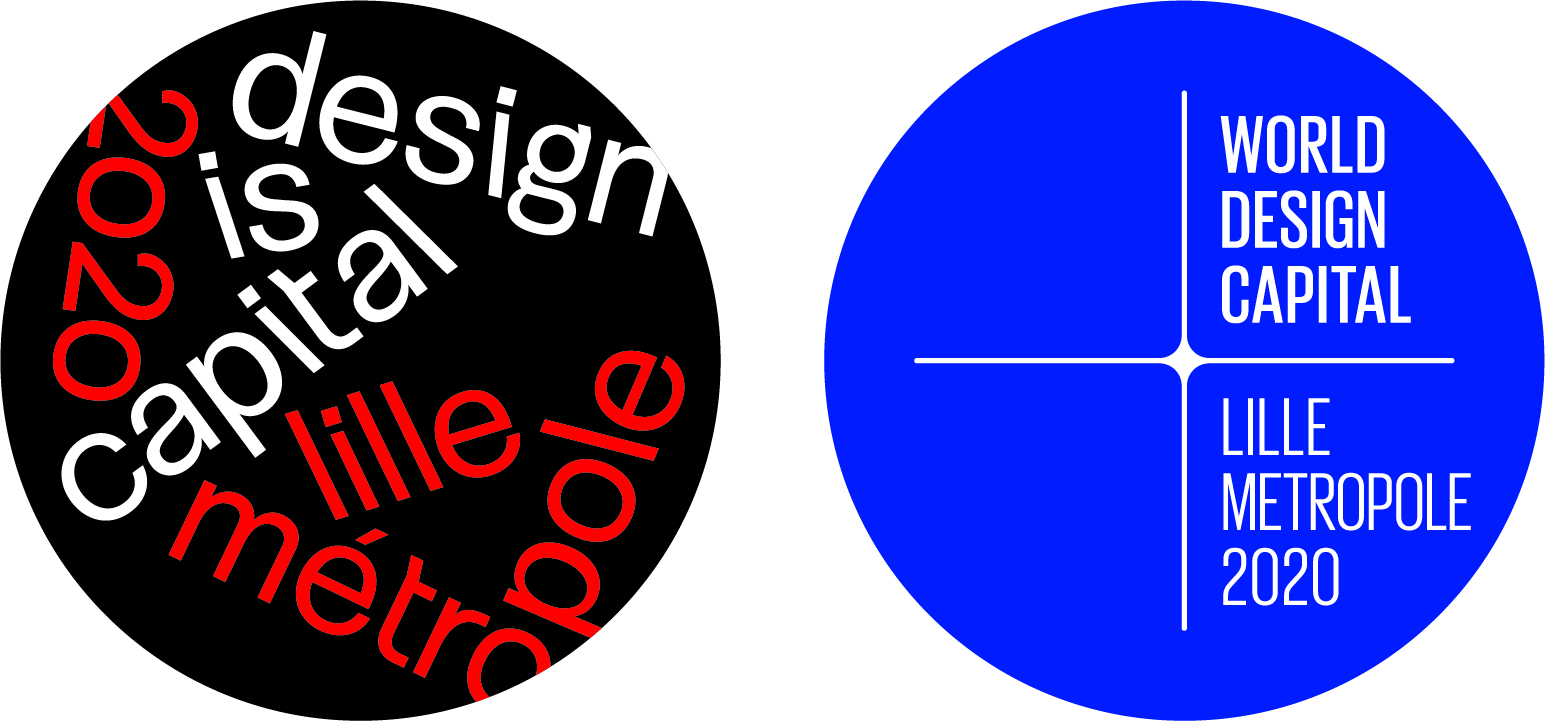Amelle Meliani and Alexis Zouechtiagh
Re-imagining our interactions in the city
As individualism increasingly shapes our contemporary societies, and has even become ingrained in city planning (e.g. anti-homeless spikes), we have taken some time to ponder the significance of emerging spaces of encounter and exchange, which foster the cooperation of different actors in order to rethink interaction within our cities.
“The metropolis of the 21st century must be plural in its identity without ever allowing urbanism or geography to create the feeling of a divided, fragmented or unequal society: a city must be the place of sharing and encounter between all those who live there.”
This quote is credited to the former socialist mayor of Paris, Bertrand Delanoë. It resonated with us because it sums up perfectly the major challenge our urban centres are facing today: the widening gap dividing individuals, and our various uses of space. We thus thought it would be interesting to look at what could be done to recreate collective dynamics and revive social life in our cities.
Places that promote mingling and collaboration in the city, or how to bring together actors with heterogeneous profiles.
In order to push people to break away from their daily routine, some places that promote mingling and collaboration in the city have been slowly developing. Their aspiration is to allow people with diverse profiles, whom otherwise might have ignored each other’s existence, to meet. These places are thus designed in such a way that reimagines the very nature of interaction, and with the aim of sowing new relationships and networks. Most importantly they allow us to question the relevance and suitability of current urban planning.
We thus decided to observe and analyse how these notions have been effectively put into practice by reaching out to two citizen projects: ADN Textilein Tournai and La Grande Maisonin Villeneuve d’Ascq. From these meetings we were able to question the relevance of these projects with a more general outlook. The recent exponential growth of these type of ventures allows us to highlight the changes that are currently taking place in how we build relations and exchange, a direct result of societal mutations, where “city dwellers express a profound need to recreate links and re-humanise cities”[1]. Questions which revolve around the notions of occupying and reinvesting space, creating common interest and sharing, are central to appreciating the real impact of these emerging collaborations.
[1]Céline Beaufils, author of the article “Quand les lieux réinventent la ville” on the Webzine WeLab – Vers un futur collaboratif.
How do we reinvest space and create interaction?
Collaboration can be experienced through artistic or practical creation, but also through a cultural or historical vector, or simply through the development of places designed for everyday socialisation. Indeed, traditional places of socialization, such as bistros[1], are deserted as individuals choose to stay at home instead, encouraged by some sort of comfortable individualism. This has been partly reinforced with the development of instantaneous methods of communication, which strengthen the dematerialiation of the encounter (e.g. Deliveroo), and are having real consequences on public health. Indeed, several studies describe a phenomenon of solitude that has been clearly increasing and which is endangering our contemporary cities and societies[2]. Thus, it has become urgent to develop new incentives for people to meet beyond their immediate social circles. The resources of public policy design constitute a genuine and much needed toolbox to assist the development of these projects. Public policy design differentiates itself by its willingness to involve all concerned parties and operate horizontally. Indeed, design is an innovative way of conceiving public action, seeking above all to involve everyone in the process of elaborating projects and public policies. This can for example take the form of a one-time cooperation between diverse individuals, as is the case of the ADN Textile project.
It will consist in occupying empty premises in the city centre of Tournai in the beginning of September 2020 in order to install old looms, which are a legacy of the city’s cultural and historical heritage. It is therefore in workshops that students of the Fine Arts institute, former textile workers and citizens will come together to collaborate. By expressing themselves around the use of these machines, they will exchange and create around what they have in common : their interest in the world of textile, but also their belonging and contribution towards the history of the city. This example is a good illustration of an attempt to mix populations separated by intergenerational, vocational and cultural gaps.
[1]https://www.lefigaro.fr/vox/societe/2018/02/15/31003-20180215ARTFIG00228-7-000-cafes-ferment-chaque-annee-ca-suffit.php
[2]https://www.demainlaville.com/ville-lutte-efficacement-contre-solitude/

La Grande Maison– the Third Place of ‘doing together’
On the bottom left of this image we can see the premises of the project La Grande Maison, and on the bottom right we can see the handicapped youth and their educators, and finally on the top we have the name of all the institutions sponsoring it.
Exploiting the potential of everyday life places
Some actors also try to foster interaction by designing areas with the specific aim to enhance the spontaneous encounter of individuals.
To illustrate this concept, we can look at the project of La Grande Maisonof the Institut d’Education Motrice (IEM) Christian Dabbadie. Marion Tocci, who is in charge of the project, explains that she wants to help create “a place where we can live together and where we realise that we can live together and that there are not so many differences.” She explains that they hope people from the professional world, young people with disabilities and neighbours to the institute will choose to “do together”, in the areas of La Grande Maisondesigned for it.
Hence, the idea is to overcome the barrier between these populations, for example through activities in the fablab or in the café of La Grande Maison.
In this way, individuals enter into what can be called an “urban flat share”[1]. As we see in La Grande Maison, the participative cafés, parks and playgrounds can also be an excuse for people of all ages and social categories to meet. In their particular case, the large park behind the IEMis clearly one of the main gateways they hope will attract people, bringing them to this particular place.
All of this is in obvious contrast with the heritage of the modern city, a sanctuary of individual needs and efficiency. The latter unfortunately having the tendency to compartmentalise and individualise the paths everyone take.
[1]Céline Beaufils, authoress of the article “Quand les lieux réinventent la ville” on the Webzine WeLab – Vers un futur collaboratif.
However, the practice is not always without obstacles
It is always necessary to anticipate the difficulties that we can potentially encounter while setting up these types of projects. For example we see that funding often remains a subject of tension. Indeed, the will to rekindle social interaction is necessary, and undoubtedly produces positive effects on our populations. However these activities are not necessarily profitable and yet they demand considerable means (human, material, …). If we take the ADN Textile project, it would be inconceivable to charge participants. Nevertheless, it is essential to pay rent for the empty premises that will be occupied… Thus it comes with no surprise that for Olivia, the project manager, the search for financing has become the central issue on which depends the success of the initiative.
Clearly, there are several ways to finance this type of project. It is conceivable, for example, to develop self-financing strategies. However, great care should be taken to avoid crossing the line after which the initial objective becomes distorted, that is to say, altering the voluntary and uninterested nature of the participant’s involvement. Thus, when Marion Tocci voices her ambition to participate in the objective of making La Grande Maisonan “economically autonomous place”, one can only welcome an initiative that integrates this type of structure into the local economy and frees it from financial constraints. However, we must remain aware of the difficulties that may rise from this situation. For example, it could undermine the potential for interaction between the children with disabilities and the employees of a company who would only be there with the purpose of attending a paid-for seminar.
A path worth exploring could be the one of public investment. Indeed, this process of renewing links between individuals requires a complete renewal of perspective regarding the development of public space. The proactive approaches that we have observed so far already come stem from public bodies. Indeed, the IEMis financed by the French Social Security, and l’Académie des Beaux Artsof Tournai, which is a public higher education institution. This falls perfectly within the scope and in the logic of public policy design. We can thus easily imagine a future in which the approach to design would supply part of the reflection around the notion of public service.

Weaving Room in l’Académie des Beaux-Artsof Tournai
A room among so many at the Académie des Beaux Arts, yet Olivia and Florette know it particularly well, considering this is where they intervene to pass on their knowledge of the vocations and the art surrounding textile. We see here some of their students, whom will surely be taking part in the ADN Textileproject starting in September 2020.
A beautiful enthusiasm
The need to mix populations seems even more undeniable for us. Our societies are becoming more individualised, our needs more heterogeneous, whereas together, we are still capable to create, exchange and find our own solutions. There exists numerous initiatives, different to the ones we studied, which all have a similar purpose: to better manage the “doing together”.
This problem goes beyond a simple issue with our attitudes. It is a social phenomenon dictated by market logic, and it must be fought vehemently. We therefore believe it wouldn’t be devoid of common sense if our governments adapted a more empathic approach to these kinds of projects, so as to fully support them.
